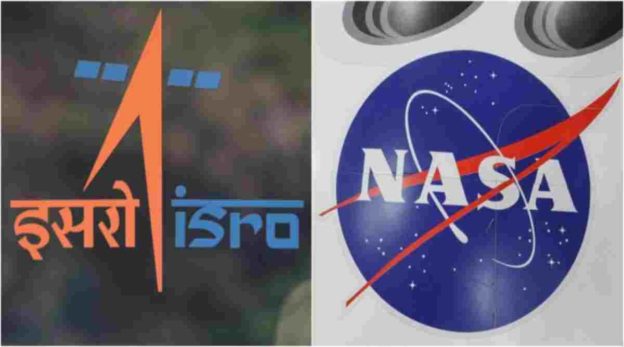Owing to increasing strategic importance of the space domain this step should be viewed as an indicator for more military collaborations in the domain of space.
For all these years, NASA and Indian Space Research Organisation (ISRO) are effectively collaborating with each other in the domain of space. On 11 Apr 2022, India and the United States on the side-lines of 2+2 ministerial dialogue, signed a bilateral Space Situational Awareness (SSA) arrangement.
Now, this SSA collaboration has opened a new door for military collaboration in the domain of space. Owing to increasing strategic importance of the space domain this step should be viewed as an indicator for more military collaborations in the domain of space.
The importance of this partnership could be analysed at different levels. There is a major scientific and technological context behind this arrangement and also there is an important strategic context too. Space technology is inherently a dual-use technology and hence this arrangement would not only have a defence focus, but also an important civilian focus too.
We normally do not have much knowledge about what is actually happening in outer space, which could be detrimental to our interest. On a routine basis, various atmospheric and weather-related phenomena occur in outer space. Normally, nothing much is discussed about these activities, because they do not directly impact our survival on earth. But there are some phenomena like geo-magnetic storms on the sun that can impact life on earth. Such storms could end up in overpowering an electrical grid leaving many states without electrical power for hours. Few months back, Elon Musk’s SpaceX lost a few low earth orbiting satellites owing to space weather related challenges in the ionosphere.
More significantly, there are two activities that are known to impact human interests in space and they include movement of space debris and meteoroid/asteroid activity. The highest orbit, in which the humans put satellites, is the geostationary orbit, which is approximately 36,000 km above the earth’s surface. So, any activities, which are happening in the zone, say from 100 km about the earth’s surface to 36,000 km, could have an impact on the space programmes of various states and private players. Communications and weather satellites are normally placed in the geostationary orbit. However, the busiest orbit is the low earth orbit (LEO), which extends say from 400 km to 2000 km about the earth’s surface,where the majority of remote sensing/earth observation, experimental, earth mapping, environmental, human spaceflight and spy satellites operate. Any damage to these satellites could impact human life significantly.
The so-called space debris, which could impact the functioning of these satellites, occurs owing to various natural and human activities. Dead satellites and leftover parts of rockets, which are used for launching the satellites constitute the majority of debris. Since space debris move randomly and not as per any physics, the existing debris could hit arbitrarily on each other. This creates more debris. Anti-satellite tests, which are conducted in the orbits, say higher than 300 km do add up this debris. At present, such debris has been added by reckless tests conducted by China (2007) and Russia (2021). There is a need to continuously monitor the movement of this debris, so as to avoid impacting the operational satellites. At present, the US Air Force has an agency, which is dedicated to monitor the debris activities and issue forecasts, which helps the satellite operators to plan their activities. At times, launches of satellites are delayed by a few minutes to avoid any possible debris hit during the launch phase. The orbits of existing satellites are shifted as per the requirements to avoid debris hit.
Various activities happening in outer space are monitored by the SSA network, which consists of phased array radars and optical telescopes that are geographically dispersed, mainly throughout the northern hemisphere. The network also consists of other radars, satellite-tracking telescopes and some optical telescopes which could be both: space -based and ground-based. Now, with this new collaboration, India could be a part of this system and also is expected to play a major role towards improving this system.
ISRO already has one radar dedicated for SSA requirements. ISRO is already establishing a Space Situational Awareness Control Centre and during 2019 the foundation stone for the same was laid. India’s defence space agency (DSA) also has much interest in this important sector aimed at space monitoring.
In the year 2007, when China conducted the ASAT test, the entire world came to know only because the US decided to tell the world. For the last few years, China has been conducting various counter-space activities. The US has major concerns about China’s (and that of Russia) increasing footprint in space from a military and space warfare perspective. In fact, the US has established a separate military force, called the US Space Force for addressing possible space warfare related challenges. India has also conducted an ASAT test (2019, almost debris less) to demonstrate the deterrence capabilities. The recent Indo-US SSA agreement would go a long way to secure India’s strategic interests in space.
https://www.financialexpress.com/defence/indo-us-ssa-agreement-military-collaboration-in-space/2492962/





